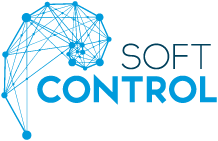NATAŠA TEOFILOVIĆ
Exhibition/ Performance & Screenings
The retrospective exhibition of ambiance installations
May 2013.
The Soft Control project was officially opened with Retrospective of Natasa Teofilovic.
This Retrospective presented three artworks by Natasa Teofilovic: “s.h.e,” “1:1” and “a│symmetry” (especially produced for Soft Control project). Natasa Teofilovic is an authentic phenomenon and an excellent representative of hybrid art of the new media in Serbia. She followed the developments of high–tech society and evolved through self-teaching. She began with video, installation and performance experiments during the 1990’s, in the spirit of neo-conceptual art, and worked up to the hybrid arts of the new millennium.
The guided tours among different target groups: art students, 3d animation students, architecture students, computer science professionals, digital art postgraduates, young scientists interested in CERN experience of Nataša Teofilovic, as well as more than 10 guided tours for gallery audience, made this exhibition the event of the month with around 1.700 entries (exhibition, guided tours, lectures).
s.h.e.
The 3D character animation and installation titled “s.h.e” is composed of five computer screens which display animated virtual characters. The animations move from one screen to the next, creating an illusion that the virtual beings are moving through physical space. When the viewer sees the virtual character at eye-level, their communication is transported to inside the monitor, and virtual and physical space begin to overlap. These independent, self-sufficient and isolated beings live by their own rules, functioning as a living digital world. Since we can’t influence them, this gives us the opportunity to differentiate between the physical and virtual world. The work belongs to intra-active, trans-disciplinary hybrid arts that reassess the boundaries between reality and the virtual world. S.h.e. was for a year, during 2007-2008, displayed within the museum collection of Ars Electronica in Linz (Austria).
1:1
The 3D character animation and installation titled “1:1” presents a shadow of an invisible moving (mostly running) virtual character that is screened on the floor. Without physical interaction, the virtual characters pull viewers into the world behind the image. Thus, virtual and physical space begins to overlap. A virtual one substitutes the viewer’s shadow. In a virtual surrounding, communication is the method of establishing identity. This work belongs to intra-active, trans-disciplinary hybrid arts that reassess the relationship between the viewer and the virtual character, as well as the boundaries between virtual images and reality. The artwork was awarded within the jury selection at the 15th international Japan Media Arts Festival in Tokyo.
a|symmetry
The 3D animation “a|symmetry” is composed of a single hand movement of a virtual character. Through multiplication, rotation, symmetry, reflection, and time delay of this hand movement, its initial characteristics disappear, and it becomes an abstract dynamic form. Metaphorically, the work simulates the creation of a system where every minor change, if it passes a set of observations and “planes of refraction,” gives a stabile image, as in a kaleidoscope. “A|symmetry” tells of unity, the senses, and imperfection (a|symmetry) which makes us all unique. The idea for the artwork evolved from an awarded project proposal for the Ars Electronica Collide@CERN competition that referred to creating images of the universe by using the body of a virtual actor and a kaleidoscope algorithm for picture compositing.
STEVAN KOJIĆ: SELF-SUSTAINING
interactive installation (electro-encephalograph, Arduino, meteorological satellites sound sources and Temerin installation, video screening)
May 2014.
The Self-sustaining System of Force and Absurdity: The concept of this interactive exhibition continues Stevan Kojic previous research on the flow of information through various media, and the possibility of converting visual impulses into audio or motor signals, but this time but this time by utilizing an electroencephalograph, a device that detects brain waves and converts them into audio-visual impulses. At the same time Stevan Kojic examined the possibility of using satellite signals of meteorological satellites orbiting around the Earth (sent as radio signals to Earth) through radio signal receivers available on the Internet. This way the hybrid structured installation enabled intersection of two types of waves: brain waves that we „broadcast in a sense”, and radio waves that surround us.
For this occasion, the created quasi-laboratory space station worked on the principle of interactivity and direct participation of the audience in the process of using waves and vibrations for converting audio into visual or motor signals and vice versa. The special Teremin device was designed for this installation.
Numerous guided tours were organized and several special lectures and presentations guided by neuro-scientists and neurologists organized for those interested in seeing the parts of installation devices such as those interested in electro-encephalograph, those interested in satellites, those interested in Teremin. This approach to the audience brought widespread visitors of different ages and interests, ranging from art and medicine, to science and space exploration.
